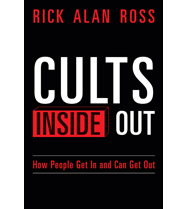Why Understanding Coercive Control In The Sean ‘Diddy’ Combs Trial Is Critical
Published By admin
The Sean “Diddy” Combs trial — charging the music mogul and entertainer on federal charges, including sex trafficking and racketeering conspiracy — remains a trending topic on social media and seems to be the center of most pop culture water cooler conversations. While most people are drawn to the trial for its juicy details and highly sensationalized and disturbing allegations, some argue that the trial highlights deeper issues that exist within the judicial system and the continued oppression of women of color. More specially, the Diddy trial highlights potential flaws in the judicial system in how issues of coercion, trauma, and physical and sexual abuse are handled and the chronic and ongoing discrediting, silencing, and disbelief of Black women in the public eye.
Judge Arun Subramanian barred expert testimony on coercive control, which allowed the defense to capitalize on presenting evidence without context. For instance, during cross-examination, the defense had witness ‘Jane’ read text messages between herself and Diddy aloud, suggesting consent or friendliness — a tactic often used to undermine credibility without expert context on trauma or coercion. That said, a new witness (“Jane”) has corroborated Cassie Ventura’s and ‘Mia’s’ testimonies, describing similar patterns of coercion, surveillance, and transactional silence. Although the testimony provides new insight, it does not truly help to paint a clear picture of abuse – much less sex trafficking or racketeering — because, again, it lacks contextualization within the frame of coercion and trauma.
The term “coercive control” was first coined by social worker Susan Schechter and has been instrumental in better conceptualizing the cycle of abuse in abusive relationships and the effects of abuse on survivors. Coercive control is the idea that abusers rarely use brute force as a method of control but instead rely on coercive mental and emotional abuse tactics to control, which are just as effective, if not more so. These types of behaviors might include intentionally confusing their partner and causing them extreme anxiety. Or, continually tearing a partner down emotionally.” Simply put, coercive control can be thought of as a pattern of controlling behavior, manipulation, and emotional abuse over time.
Content retrieved from: https://www.forbes.com/sites/maiahoskin/2025/06/20/why-understanding-coercive-control-in-the-sean-diddy-combs-trial-is-critical/.






